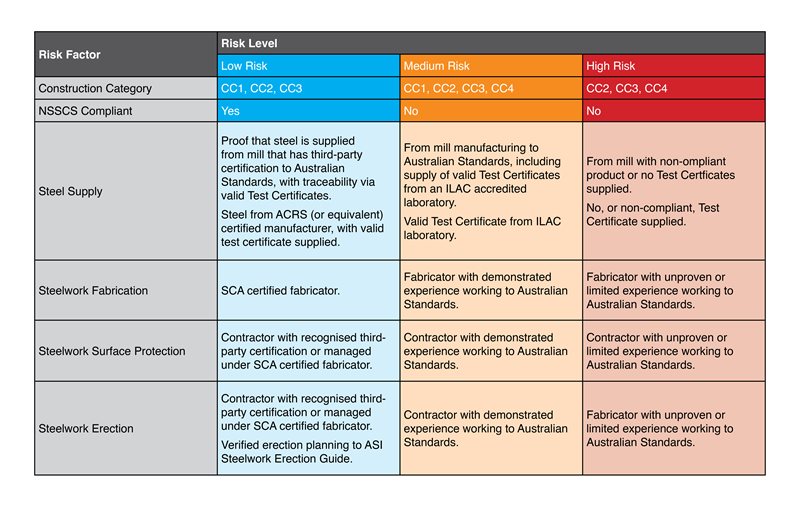

The National Structural Steelwork Compliance Scheme (NSSCS) and Australian Standard AS/NZS 5131 provide a number of benefits to building certifiers.
The benefits to building certifiers of AS/NZS 5131 and the National Structural Steelwork Compliance Scheme (NSSCS) include the following:
.jpg?variant=HalfWidth)
To maximise the likelihood of achieving compliant project outcomes, the building certifier needs to be involved with the project stakeholders early in the process as checking outcomes after the fact will invariably increase the likelihood of non-compliant outcomes, which are difficult and costly to rectify.
The ASI recommends the following process:
A primary mechanism for ensuring compliance is the implementation of an inspection schedule that is responsive to the type of structure (Building Class 1 to 10 in the NCC) and project specific requirements. It is generally recognised that a risk-based approach allows building surveyors to take an overall view of the safety requirements of the building and establish a responsive inspection schedule.
The use of a risk-based approach to developing and implementing a ‘sufficient inspection schedule’ for building surveyors can be achieved through a risk matrix that assigns the steelwork structure a rating based on certain criteria. The risk rating assists the building certifier in determining an inspection schedule, including the type and frequency of inspections required, commensurate with other factors that will determine the application of inspectorial resources.
The recommended risk matrix outlined below assesses the project as belonging to one of three risk categories: ‘low’, ‘medium’ and ‘high’. The assessment of the risk matrix and establishing a sufficient inspection schedule is outlined in the ASI publication Good practice steelwork procurement – Guidance for Building Surveyors (PDF).
